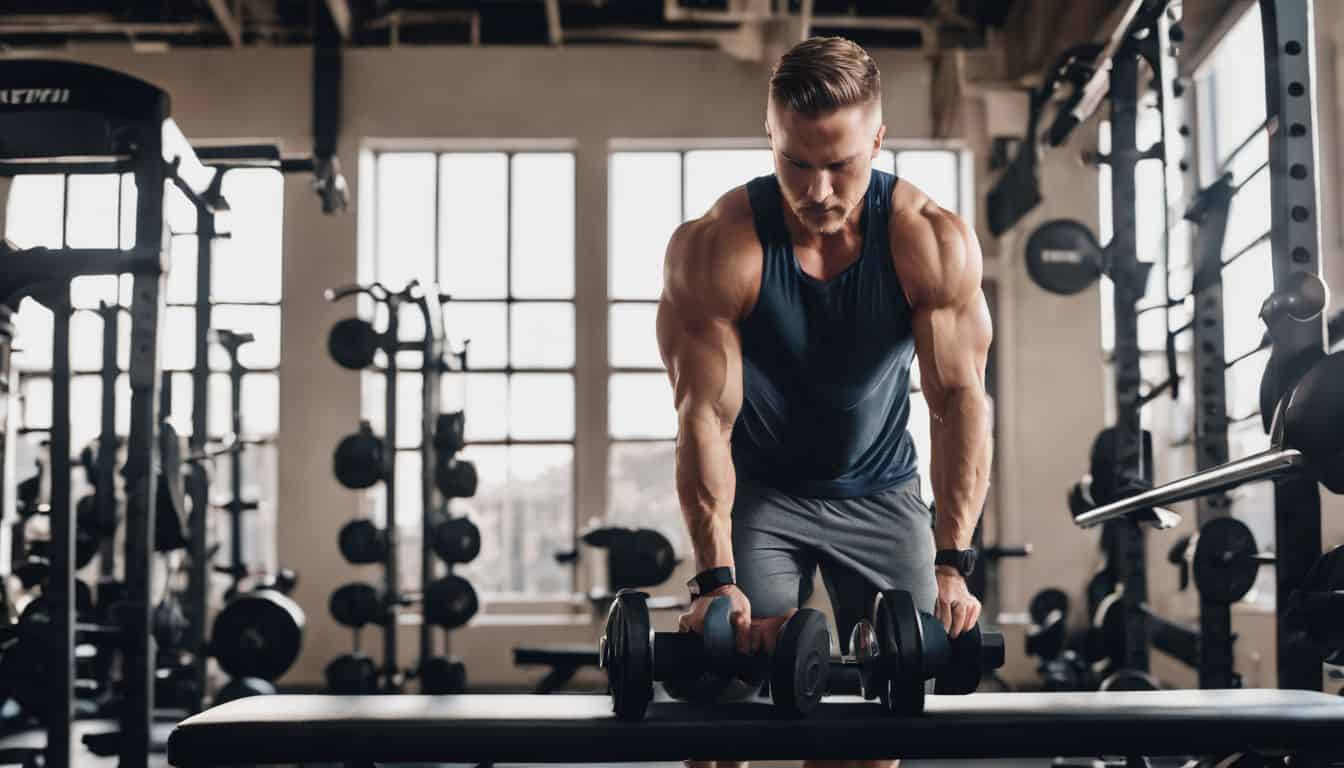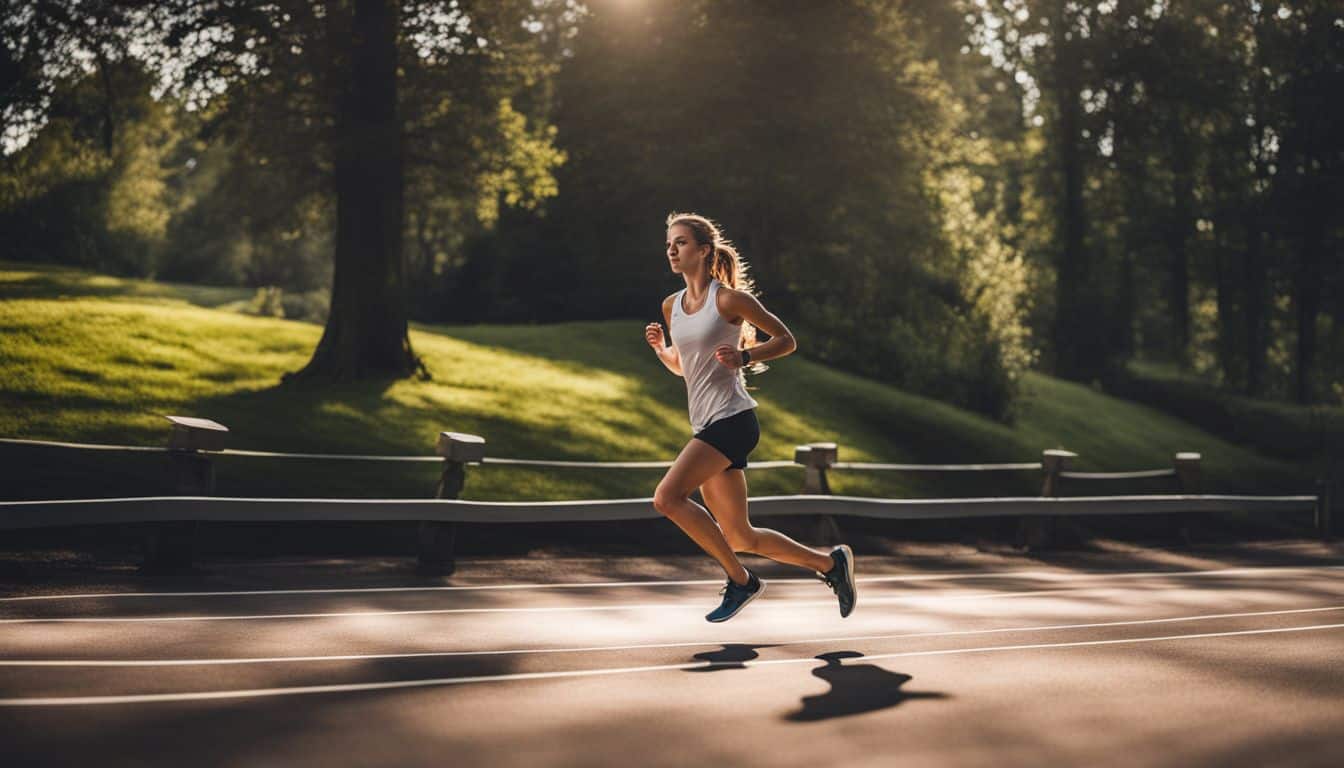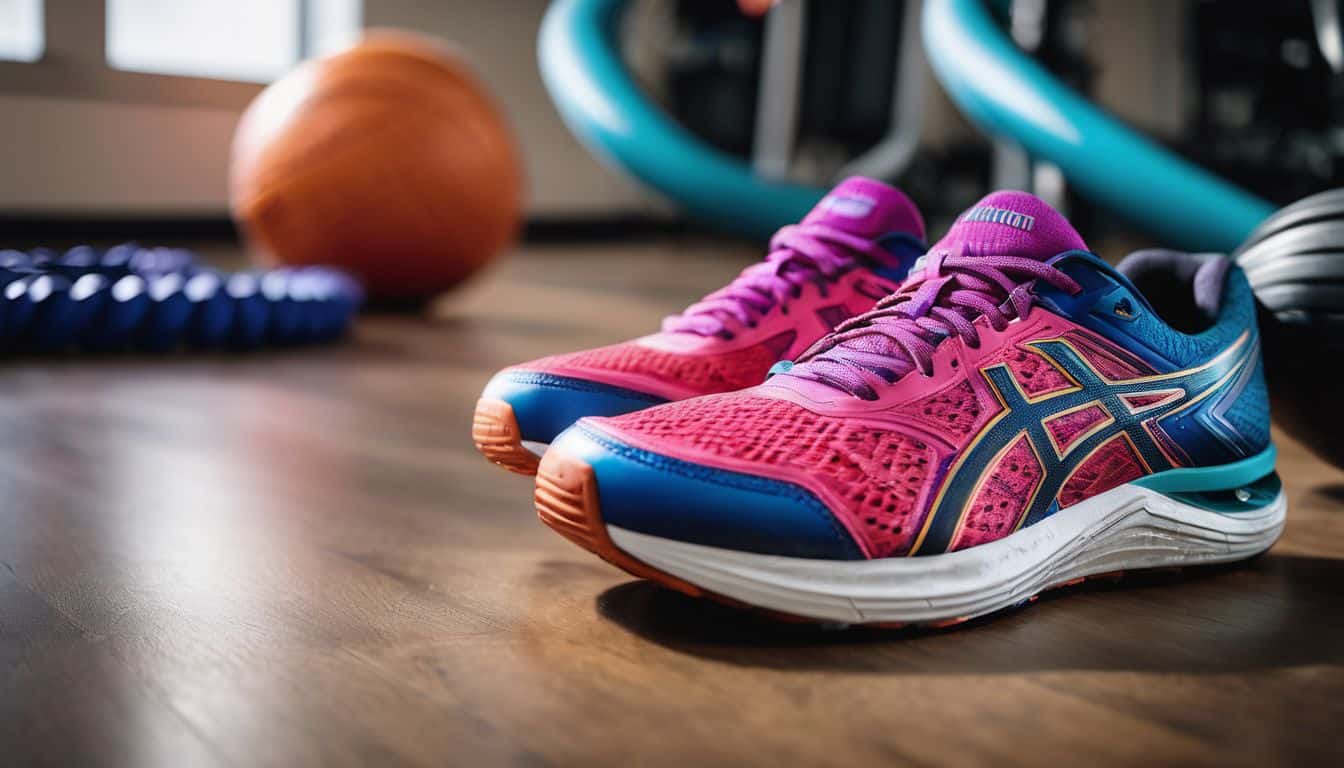Ever had those days when you look at your favorite running shoes and wonder, “Hey, can these double up as gym trainers?” Trust me, this question has kept me awake on multiple nights too.
So, I decided to put on my detective hat and did some serious investigating – consulting fitness gurus and even going through tons of research. This blog post is all about sharing what I discovered about the adaptability of running shoes for gym workouts, specifically compared to specialized gym sneakers.
Fair warning – it’s more than just comfort we need to talk about! Ready to unravel a shoe mystery? Buckle up; let’s dive right in!
Key Takeaways
- Running shoes and gym shoes serve different purposes. Running shoes are designed for forward motion, while gym shoes provide stability and support for various activities at the gym.
- Running shoes may not be suitable for intense gym workouts due to their lack of lateral support, reduced stability during intense exercises, and decreased traction.
- When choosing gym training shoes, look for proper support, cushioning, breathability, moisture – wicking properties, and good traction to ensure safety and optimal performance.
- While running shoes can be used for light gym workouts like walking or using the elliptical, it’s best to choose appropriate footwear that provides adequate support and stability for each specific activity at the gym.
The Differences Between Running Shoes and Gym Shoes
Running shoes and gym shoes have distinct differences in terms of their purpose, design, support, stability, traction, and grip.
Purpose and design
Running shoes and gym shoes serve different needs. Running shoes are built to move you forward. They give your feet comfort while running. Gym shoes, also known as cross trainers, are for many activities at the gym.
They have a flexible sole that lets your foot bend and turn easily. It’s crucial to pick the right shoe for what you’re doing to stay safe and do well in your sport or exercise.
Support and stability
Running shoes have a great design. They give us cushion and help with shocks when we run. But gym shoes are different. They give more stability and side help for many gym moves.
Stability running shoes stop overpronation or supination, this is extra support. Each person needs a different amount of stability in their running shoes. So, it’s good to find the right balance for you.
For comfort and best results, use the correct shoe for your activity.
Traction and grip
Running shoes give great grip on roads and sidewalks. They also work well on treadmills. But gym training is different. It has quick moves and side steps. Here, running shoes might let you down.
Gym shoes are better for this use. They grip the floor with power when you move in all ways. Their soles flex right too, for safe side steps or fast turns.
Why Running Shoes Are Not Suitable for Gym Training

Running shoes are not suitable for gym training due to their lack of lateral support, reduced stability during intense exercises, and decreased traction.
Lack of lateral support
Gym training involves a lot of lateral movements, like side steps and jumps. Unfortunately, running shoes may not provide the necessary support for these types of exercises. They are designed more for forward motion, with less emphasis on side-to-side stability.
This lack of lateral support can increase the risk of ankle sprains or other injuries while performing gym workouts. It’s important to choose shoes that have proper support and cushioning specifically tailored for the unique demands of gym training.
Reduced stability during intense exercises
During intense exercises, it is important to have good stability to prevent injuries. When using running shoes for gym training, there can be reduced stability. This is because running shoes are designed primarily for forward movement and may not provide the necessary lateral support required for side-to-side movements in the gym.
Additionally, the cushioning in running shoes is optimized for shock absorption while running, which may affect stability during high-impact exercises. It’s crucial to use training shoes specifically designed for gym workouts as they offer better support and stability during intense exercises, reducing the risk of injuries like ankle sprains.
So, it’s best to choose shoes that are designed with gym training in mind to ensure you stay safe and stable during your workouts.
Decreased traction
During gym training, it’s important to have good traction and grip to avoid slips and falls. While running shoes are designed for forward motion on smooth surfaces, they often lack the necessary traction needed for gym exercises.
This can increase the risk of accidents during workouts that require stability and quick movements. Gym shoes, on the other hand, provide better grip and traction specifically tailored for these types of activities.
So it’s best to choose appropriate gym training shoes that offer the right amount of traction and support to keep you safe during your workouts.
What to Look for in Gym Training Shoes
When choosing gym training shoes, it’s important to consider proper support, cushioning, breathability and good traction. Don’t miss out on these crucial details! Read more for expert tips on finding the perfect pair.
Proper support and cushioning
Choosing gym training shoes with proper support and cushioning is crucial for a comfortable and safe workout. Running shoes, while designed for shock absorption and cushioning during running, may not provide the same level of support needed for gym training.
When looking for gym training shoes, consider the thickness of the midsole material, foam firmness, as well as heel support and forefoot support. These features will help ensure that your feet are adequately supported during HIIT workouts or any intense exercises you perform at the gym.
Having the right amount of cushioning can also help prevent injuries by reducing impact on your joints and muscles. So when it comes to choosing gym training shoes, prioritize proper support and cushioning to have an effective and enjoyable workout experience.
Breathability and moisture-wicking properties
Proper gym training shoes should have breathability and moisture-wicking properties to keep your feet cool and dry during workouts. Breathability refers to the shoe’s ability to allow air circulation, while moisture-wicking properties help in pulling sweat away from your skin.
These features are crucial because they prevent excessive sweating, reduce the risk of blisters, and maintain overall foot comfort throughout your training session.
When choosing gym shoes, look for materials like polyester, nylon, or wool as they are known for their excellent moisture control and ventilation capabilities. This ensures that any sweat produced is quickly absorbed and evaporated, preventing a build-up of dampness.
Good traction and grip
When choosing gym training shoes, it’s important to look for ones that offer good traction and grip. The outsole of the shoe should have traction control and slip resistance to prevent any accidental slipping during your workouts.
This is especially crucial when you’re doing exercises that require quick movements or involve a lot of lateral support, such as plyometric exercises or quick pivoting movements. Opting for shoes specifically designed for gym training will ensure you have the stability and grip needed to perform your exercises safely and effectively.

Can You Use Running Shoes for Light Gym Workouts??
Yes, running shoes can be used for light gym workouts, but there are some considerations and limitations to keep in mind.
Considerations for light exercises
For light exercises in the gym, it’s important to consider the type of shoes you use. While running shoes may be okay for low-impact activities like walking on a treadmill or using the elliptical, they may not provide enough support and stability for more intense workouts.
Running shoes are designed differently than cross-training shoes, which are better suited for lateral movements and quick changes in direction. Using running shoes for light exercises may increase your risk of injury and decrease your overall performance.
It’s always best to choose the proper footwear that provides adequate support and traction for each specific activity you plan to do at the gym.
Potential risks and limitations
Using running shoes for gym workouts can pose potential risks and limitations. Running shoes lack the necessary lateral support required for exercises that involve side-to-side movements, increasing the risk of ankle sprains or twists during intense workouts.
Additionally, running shoes may not provide enough stability, potentially affecting your form and compromising your performance during weightlifting or other strength training exercises.
Furthermore, the reduced traction of running shoes on gym floors can make it challenging to maintain proper balance and stability during dynamic movements. Therefore, it is important to choose appropriate gym training shoes that offer adequate support, cushioning, breathability, moisture-wicking properties, and good traction to minimize the risk of injuries and optimize your workout experience.
Expert Opinion: Can I Use Running Shoes for Gym Training?
As a running enthusiast, I understand the importance of having the right shoes for each activity. When it comes to gym training, it’s essential to use the appropriate footwear. While running shoes provide cushioning and support for forward motion during running, they may not be suitable for intense exercises in the gym.
Gym shoes, also known as workout or training shoes, are designed with versatility in mind and offer better lateral support and stability compared to running shoes. They also provide improved traction and grip on various surfaces, which is crucial for safety during weightlifting or high-intensity workouts.
Therefore, it is advisable to invest in a pair of good-quality gym shoes specifically designed for gym training rather than relying on your running shoes alone.
Conclusion on Can I Use Running Shoes For Gym Training
In conclusion, while you can use running shoes for gym training, they may not be the best choice. Running shoes lack lateral support and stability needed for intense exercises and may have reduced traction.
It is recommended to look for proper support, cushioning, breathability, and good traction when choosing gym training shoes. Consider cross-training or athletic shoes designed specifically for weightlifting or HIIT workouts for optimal performance and safety at the gym.
FAQs on Can I Use Running Shoes For Gym Training
1. Can I use running shoes for gym training?
Yes, you can use running shoes for gym training as they provide cushioning and support for various exercises.
2. Are running shoes suitable for weightlifting or strength training?
No, running shoes are not ideal for weightlifting or strength training as they have too much cushioning and may hinder stability and proper form.
3. What are the advantages of using specialized gym shoes?
Specialized gym shoes offer better stability, traction, and support specifically designed for activities like weightlifting, HIIT workouts, and lateral movements.
4. Will using running shoes in the gym affect my performance?
Using running shoes in the gym may impact your performance by reducing stability during exercises that require balance or quick changes in direction.
5. Do I need to buy separate shoes for different types of workouts?
While it’s not always necessary to have multiple pairs of workout shoes, owning specialized footwear designed specifically for certain activities can optimize safety and enhance performance during those exercises.





Leave a Reply